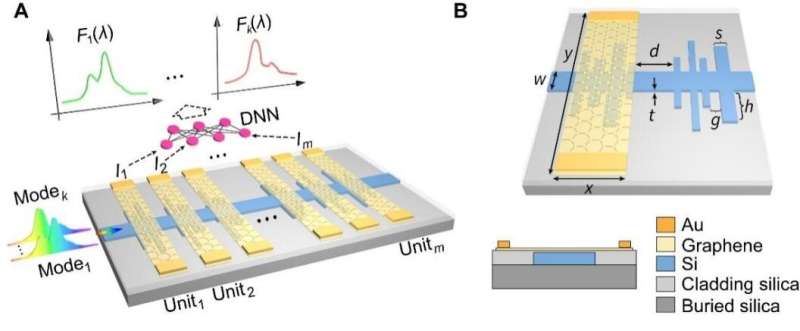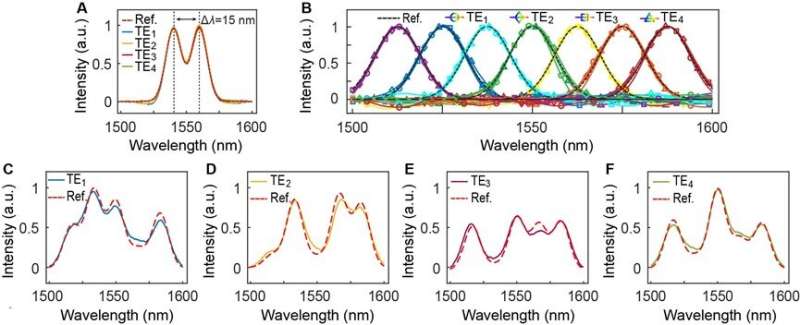Figure 1. Illustration of the proposed mode-division demultiplexing spectrometer. Credit: Opto-Electronic Science (2022). DOI: 10.29026/oes.2022.220012
In the information era, photons and electrons are the main carriers of information transmission. Different from Moore's law in microelectronics, the density of integrated photonic devices is mainly limited by the wavelength of light or diffraction limit.
In order to improve the information transmission capability of photonic devices, multiplexing technologies such as wavelength division multiplexing (WDM), polarization division multiplexing (PDM) and mode division multiplexing (MDM) have been widely and deeply studied, which effectively improve the transmission capacity of communication systems.
Recently, researchers combined these multiplexing technologies (such as WDM-MDM hybrid multiplexing) to satisfy the enormous demand of ultra-high-link capacity in various scaled of optical networks.
However, when extracting the wavelength-dependent information carried on independent modes, it is usually necessary to cascade the MDM device and WDM device, which increases the footprint of the device. Moreover, it is still a challenge to achieve both mode demultiplexing and spectral measurement in a single device due to strong coupling effects between different guide modes. Therefore, the on-chip multimode spectrometers compatible in MDM systems still remain as an open problem.
The authors of this article in Opto-Electronic Science propose the concept of MDM spectroscopy, and describe the first integrated mode-division demultiplexing spectrometer for MDM systems. This spectrometer consists of a branched multimode waveguide and an array of photodetectors (figure 1), achieving the integration of mode demultiplexing and spectral detection by the dispersion of structure and photocurrent measurement. Using deep learning techniques to solve inter-mode nonlinear coupling problem, the researchers successfully realize the functions of single-shot reconstruction of multimode spectra and multi-shot spectral resolution enhancement.
Figure 2. Single-shot simultaneous multimode reconstructions for TE1-TE4. Credit: Opto-Electronic Science (2022). DOI: 10.29026/oes.2022.220012
The simulation results show that the distribution of optical fields in the branched structure vary with modes and wavelengths, inducing varied photocurrents on detectors. Empowered by deep learning algorithms, the 15-nm spectral resolution of parallel reconstruction for TE1-TE4 is achieved by a single-shot measurement of 25 detectors in the bandwidth of 1,500-1,600 nm.
Moreover, the researchers further applied the multimode reconstruction method to enhance spectral resolution, i.e., by stacking the multimode response in TE1-TE4 to the single spectra at the time sequence, and the 3-nm resolution is realized, which is improved by ~1.3 times compared with a single-mode response (7-nm resolution) and breaks the resolving limitation by the number of detectors.
More information: Ze-huan Zheng et al, Towards integrated mode-division demultiplexing spectrometer by deep learning, Opto-Electronic Science (2022). DOI: 10.29026/oes.2022.220012
Provided by Compuscript Ltd

























